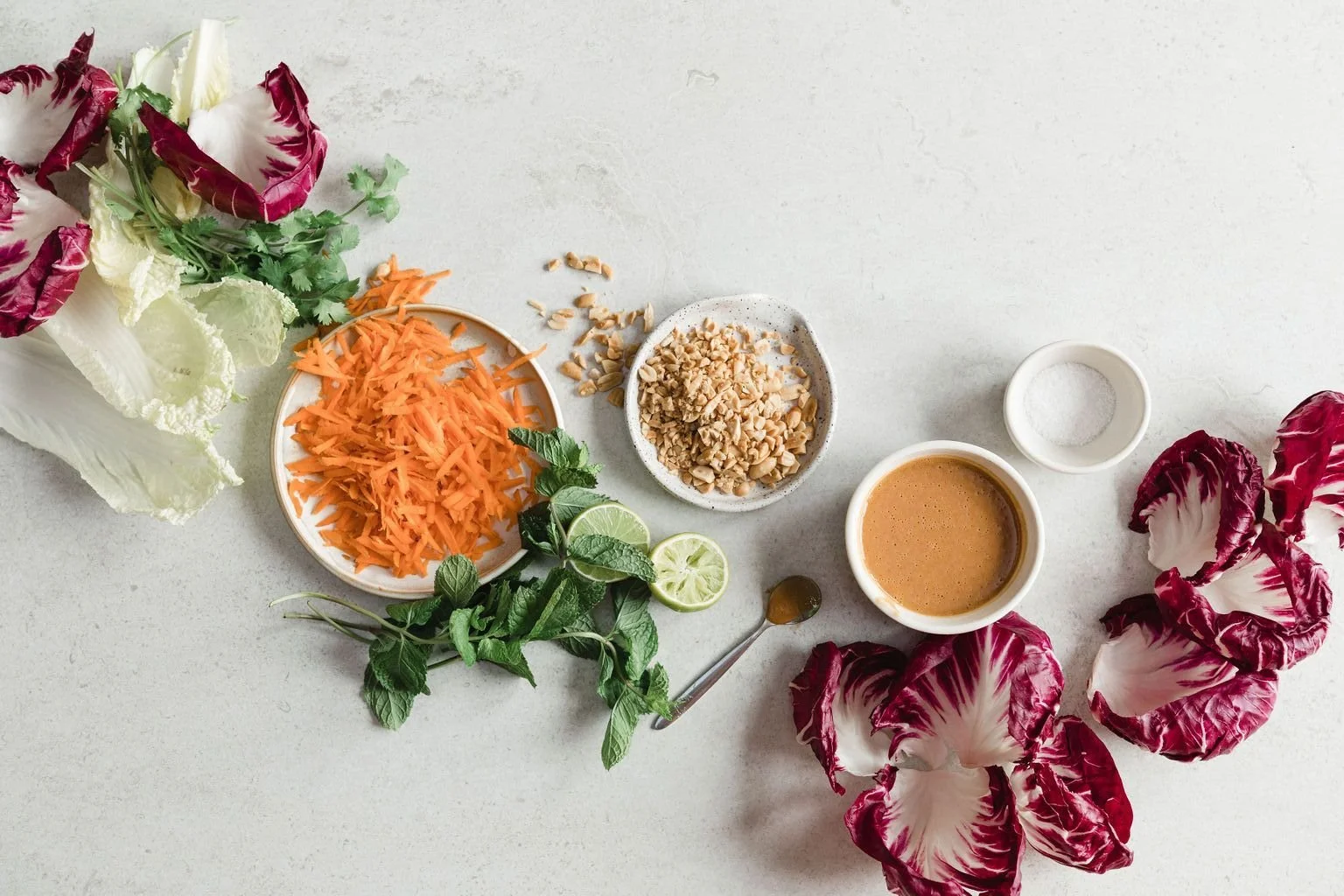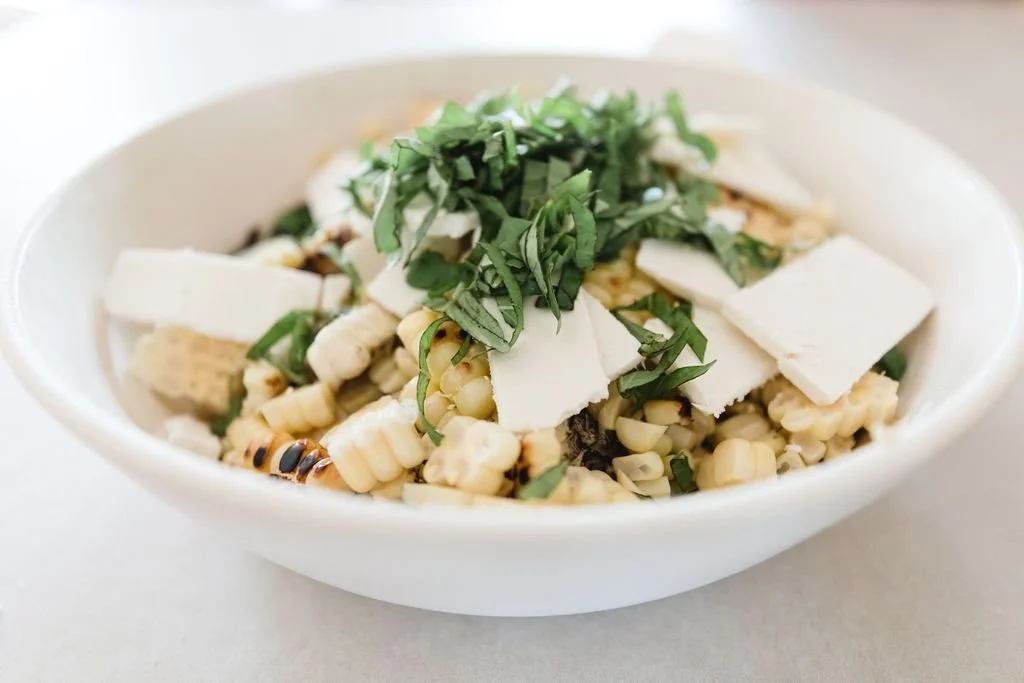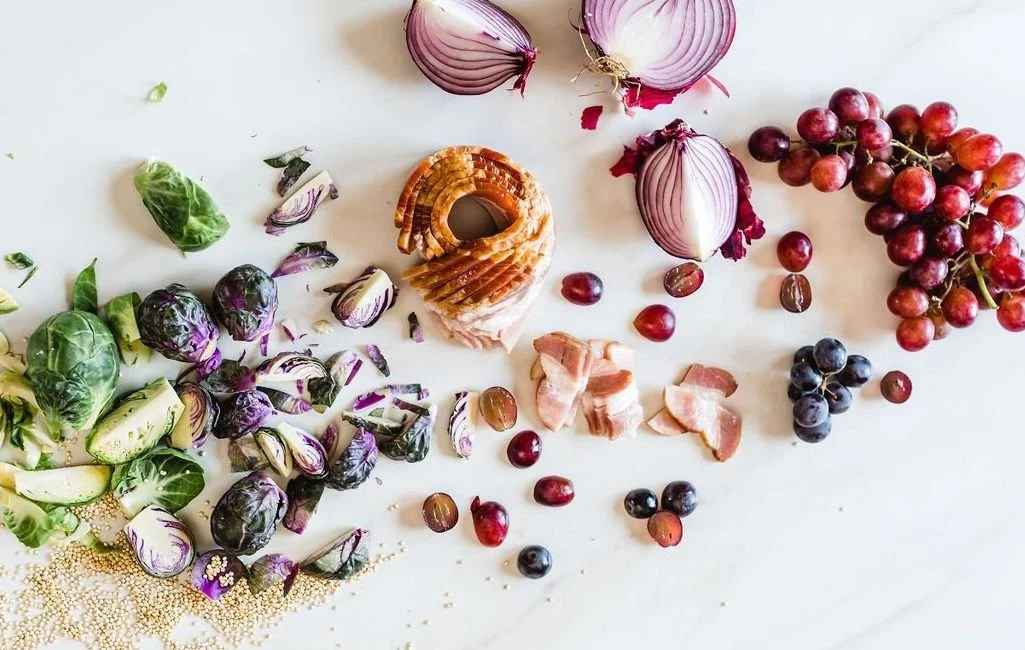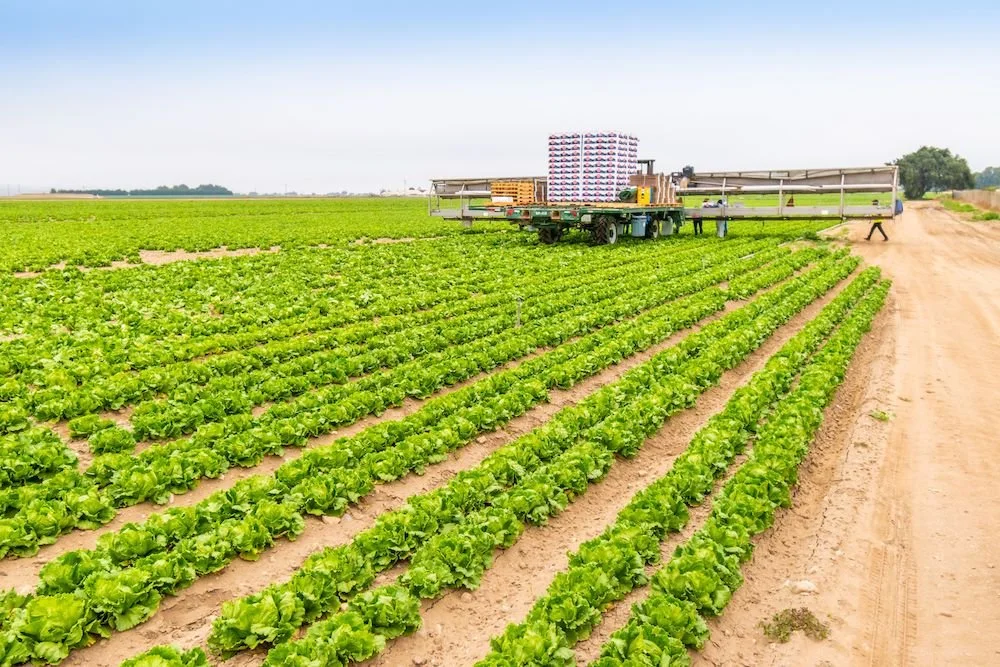Salads have become an incredibly popular restaurant offering due to their customizability and nutritional value. You can create a healthy, delicious salad to meet any flavor preferences or dietary restrictions.
Here at Hitchcock Farms, we're always excited to see which new flavors, ingredients, and cooking methods are taking the world by storm.
In this blog, we're diving into the salad trends that are defining 2025 and how you can adopt them in your restaurant or home kitchen.
What Are Consumers Looking for in 2025?
Food trends are constantly changing as consumers' needs and preferences shift.
2024 saw a huge emphasis on protein, especially plant-based alternative proteins.
This trend is likely to continue through 2025, but we're seeing a shift toward whole-food protein sources like beans and nuts instead of processed mock meats.
Consumers are also loving unique or controversial flavor combinations. They're always looking for the next "pineapple on pizza" style of debate, so bold and unusual combos will trend this year.
Sustainability continues to be a huge focus for chefs and diners alike, too. Consumers are loyal to restaurants that embrace ethical, climate-friendly practices.
10 Revolutionary Salad Shifts Defining 2025
1. Biodiverse Microgreens Go Mainstream
Restaurants and home cooks are moving beyond the traditional kale and arugula and exploring hyper-local, lesser-known microgreens.
Microgreens are baby green vegetables with edible leaves and stems.
Many microgreen varieties grow easily on windowsill planters, so they've become especially popular with home chefs who have an affinity for home-grown produce.
There are over 1,500 types of microgreens, all with different looks, flavors, and nutritional contents.
They’ve been a popular salad garnish for health-conscious consumers for years.
In 2025, though, we'll see microgreens become the star of the show. Expect to see salads with microgreen bases as chefs and diners embrace the versatility and nutritional punch of the baby greens.
How to Adopt It: Swap out a traditional salad base with microgreens, or offer rare varieties such as buzz buttons or mustard flowers as a topping for a salad bar.
2. AI-Optimized Flavor Combinations
Artificial intelligence took the world by storm in 2024, and we'll continue to see its influence on our daily lives in 2025.
Busy parents ask AI to create a weekly meal plan and grocery shopping list.
Restaurant owners use AI to research consumer trends.
Passionate home chefs consult AI for unique recipe ideas.
AI is revolutionizing how we all experience cooking and dining.
One of the most interesting 2025 food trends is the use of AI to develop unexpected ingredient pairings.
Data-driven insights have led to combinations like watermelon radish with preserved citrus or fermented plums with bitter greens.
AI can help chefs develop interesting new recipes, and it can help diners customize their meals to perfection.
For instance, the restaurant Just Salad recently launched their "Salad AI" feature, which creates personalized salad recommendations based on the user's nutritional needs, lifestyle, and flavor preferences.
How to Adopt It: Look to AI for inspiration on new recipes, especially recipes to suit specific nutritional or dietary requirements.
If your restaurant offers online or mobile ordering, consider taking the plunge into AI-enabled ordering systems.
3. Climate-Adaptive Ingredients
With changing weather patterns affecting crop growth, we're seeing the rise of drought-resistant greens and other climate-friendly produce options.
Some of our classic drought-resistant favorites include kale, beans, sweet corn, carrots, and chard.
Expect to see these ingredients become more affordable and readily available compared to more fragile or temperamental plants.
Ancient desert plants like purslane and lamb's quarters are also being rediscovered.
Farmers are developing new varieties of plants that are better suited to indoor growing, too.
How to Adopt It: Look for salad recipes that incorporate climate-resistant ingredients, such as our napa cabbage and kale salad.
Use locally and sustainably sourced produce whenever possible to promote climate-friendly dining.
4. The Return of Warm Salads
Salads are usually considered a cool, refreshing summertime meal.
In 2025, it's time to think outside the box.
Some salads are best enjoyed cold, but others can be transformed into warm, hearty dishes perfect for frigid winter days.
Enjoy a warm salad made with Brussels sprouts and kabocha squash, or cook up a grain bowl with quinoa, kale, and your protein of choice.
In 2025, we'll see innovative new techniques for maintaining the textures and flavors of our favorite salads while serving them warm.
There's also a trend of incorporating traditional warming ingredients from other cultures, like a Chinese hot pot and Korean bulgogi.
How to Adopt It: Timing and layering are the keys to crafting the perfect warm salad.
Use a hearty green like kale or radicchio that won't wilt at a higher temperature.
Incorporate temperature-stable ingredients like roasted nuts or seeds, and mix in your warm ingredients right before serving.
5. Social Media Microtrends
For as long as it's been around, social media has influenced both home cooking and restaurant dining.
Every year, we see new ingredients and recipes circulate.
In 2024, for instance, hot honey was inescapable among food bloggers and content creators.
2024 was also the year of the "dense bean salad," a trend that's likely to continue into 2025. The dense bean salad is a customizable dish that contains multiple types of beans, chopped veggies, and a vinegar-based dressing.
Microtrends are typically highly specific and somewhat short-lived, although they can make a lasting impact on restaurant menus.
Potential microtrends for 2025 include unique pizza toppings, lavender-infused foods and drinks, and pickled ingredients.
We'll have to wait and see what other social media microtrends hit our feeds this year.
How to Adopt It: Keep a close eye on TikTok, Instagram, and Facebook to see what trends are rising in 2025.
If your restaurant has a social media presence, consider participating by posting your own content embracing the trends.
6. Experimental Fermentation
Kimchi and sauerkraut will continue to be popular additions to salads in 2025.
These fermented ingredients add flavor and promote gut health, which is a growing interest among health-conscious diners.
In addition to these classic fermented foods, we'll see experimental ferments make their way into salad recipes this year.
Expect to see house-made vinegars from unexpected sources, like coffee cherries or pine needles.
Koji-cultured vegetables also add complex umami notes to salads.
How to Adopt It: Begin with familiar fermented ingredients, like kimchi or sauerkraut, as accent elements.
Then, experiment with making simple ferments at home, such as pickled vegetables or kombucha vinaigrettes.
7. Zero-Waste Components
As the desire for environmental sustainability grows stronger than ever, expect to see a shift toward zero-waste cooking.
Using every part of the vegetable, from root to stem, ensures that we're using our precious resources wisely.
Embracing the imperfect in the name of sustainability is a rising trend, too.
New services pop up all the time that help markets and restaurants sell their imperfect produce or day-old goods at a discount.
Restaurants are even integrating composting systems into their operations to truly live by the "reduce, reuse, recycle" mantra.
How to Adopt It: Try to use whole vegetables in your salads wherever possible. Stalks and stems may have different prep and cooking requirements than leaves, but in many cases, all parts of the plant are edible.
If adding citrus slices to a salad, zest the peel for extra seasoning.
You can also use vegetable scraps for stocks or soups. If you're looking for a use for your broccoli stalks, try our creamy broccoli soup recipe.
8. Interactive Assembly Experiences
Salad bars are nothing new, but 2025 will see them reimagined as an exciting culinary experience.
A good salad bar provides the perfect opportunity for diners to build their ideal meals.
Tableside self-assembly elements will be popular this year, too.
For example, serving tortillas on the side and allowing diners to craft their own tacos creates an engaging and customizable dining experience.
Restaurants are also incorporating QR codes that link to information about their farming and sourcing practices.
How to Adopt It: Host themed salad bar nights at your restaurant. Encourage your diners to build taco salads, breakfast salads, or even dessert-inspired salads.
9. Cultural Fusion Innovations
International flavors and ingredients will become increasingly popular for salads in 2025.
We'll see recipes and menu items that fuse elements from multiple cultures, like Middle Eastern fattoush meeting Japanese wafu dressing.
Traditional cooking methods have also been making a comeback. Expect to see more salad recipes calling for smoked proteins, wood fire-grilled veggies, or fermented ingredients.
How to Adopt It: Get curious about popular flavors, ingredients, and cooking methods from other cultures.
Learn directly from chefs who belong to these cultures by taking classes or engaging with their online content.
Experiment with fusing flavors from multiple cultures until you find the perfect unique combination that could make your restaurant stand out.
10. Mindful Sourcing and Storytelling
Diners are more concerned than ever about where their food comes from.
With growing concerns about environmental sustainability and ethics in food sourcing, transparency is key for chefs and restaurant owners.
Many restaurants now partner with indigenous farms to support their communities and bring traditional ingredients to the market.
When consumers hear the story of where their food comes from, the dining experience feels more impactful.
How to Adopt It: Focus on ethical food sourcing in 2025. Know where your produce comes from, and take pride in supporting local farmers like Hitchcock Farms.
Stay on Top of This Year's Food Trends
When it comes to salads, your options are limitless.
Every year brings about more experimentation and innovation, leading to exciting new recipes that broaden diners' palates.
Joining in on the 2025 trends is a great way to develop new dishes and connect with consumers.
Hitchcock Farms is proud to supply sustainably grown produce to foodservice businesses so they can offer the highest quality menu items to their diners.
Whether you're a restaurant owner or a home cook, we hope 2025 is a year of inspiration and opportunity!










